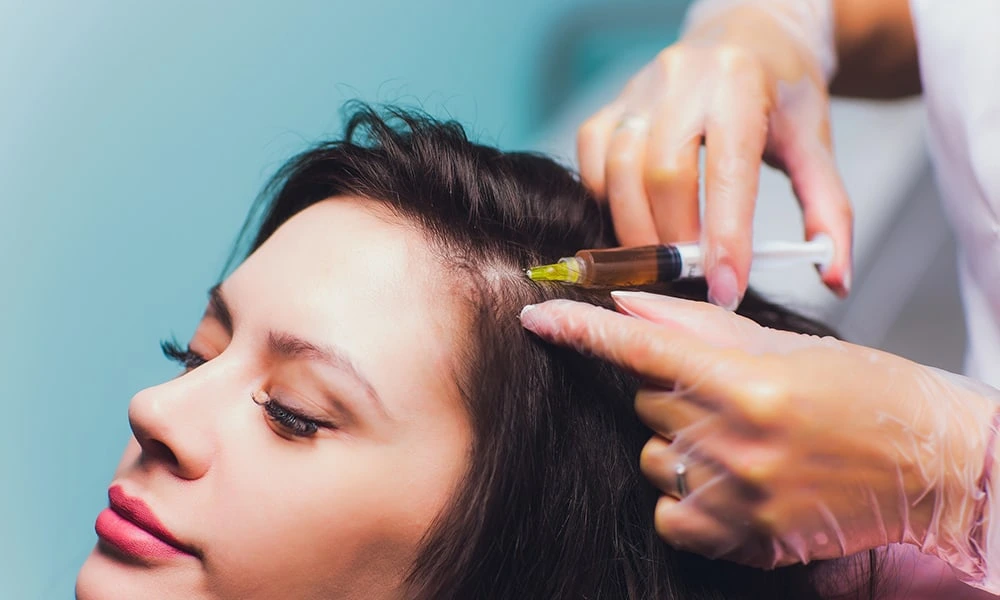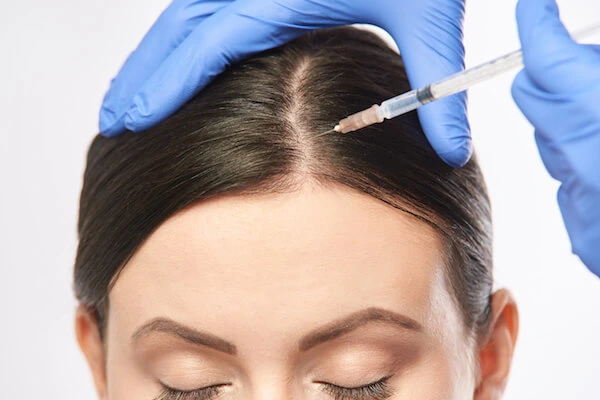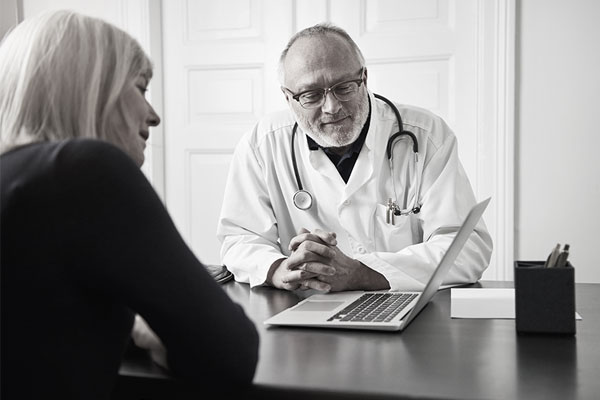PRP Procedure in Abu Dhabi
Elyzee Hospital is one of the best medical centers in Abu Dhabi specializing in PRP Procedure.

PRP Procedure in Abu Dhabi
Platelet Rich Plasma (PRP) therapy is a technique that harnesses the healing properties of a patient’s own blood to stimulate tissue regeneration and repair. It has gained popularity across medical fields, including dermatology, orthopedics and sports medicine. In the realm of aesthetics PRP therapy is widely utilized for rejuvenation, hair restoration and skin revitalization. This article will provide an overview of the PRP procedure highlighting its advantages, suitable candidates, consultation process, pre-treatment preparations, the treatment itself, procedure recovery period, final outcomes and conclude with a Q&A segment addressing common inquiries and concerns.
The Benefits of Mustache Hair Transplant Procedure
The procedure known as PRP provides benefits, in medical and aesthetic uses. One of the advantages of PRP therapy is its method for healing and rejuvenation. Since PRP is derived from the patient’s blood there is no risk of allergic reactions or negative side effects. This treatment utilizes platelets that are rich in growth factors, which help stimulate cell growth, collagen production and tissue repair. As a result it helps improve the skin’s appearance making it look healthier and more youthful while also aiding in the healing process of injured tissues.
PRP therapy is well known in the field of aesthetics for its ability to revitalize the skin and counteract the effects of aging. It has proven to be effective in diminishing the visibility of lines, wrinkles and acne scars resulting in a more vibrant complexion. Moreover combining PRP injections with fillers can amplify their efficacy. Produce outcomes that appear more authentic and true to nature.

When it comes to hair restoration PRP therapy has demonstrated encouraging outcomes in stimulating the growth of hair and improving its density. By administering PRP into the scalp the growth factors help fortify the hair follicles, encourage hair growth and slow down the process of losing hair. As a result it has become a sought after treatment, for individuals facing issues, like thinning hair or early stage hair loss.
The Best Candidate for PRP Procedure
The suitability of PRP therapy differs based on the purpose. When it comes to rejuvenation individuals who aim to enhance skin texture, minimize lines and achieve a youthful radiance are ideal candidates for PRP therapy. People with mild indications of aging and skin damage can experience benefits from this treatment.
Individuals who are in the stages of hair loss or experiencing thinning hair are often considered candidates for PRP therapy in order to restore their hair. It is crucial to have a number of hair follicles for the treatment to yield results. However individuals with hair loss may require techniques such as hair transplantation in combination with PRP therapy to achieve the desired outcomes.
Consultation with a Doctor and Preparation for the Procedure
It is important to schedule a consultation with a knowledgeable expert before considering PRP therapy. During this meeting the healthcare provider will evaluate the patient’s background, talk about their desired outcomes and assess whether they are suitable for the procedure. They will provide an explanation of the PRP therapy process. Address any queries or worries that the patient might have.
Getting ready for the PRP procedure is usually simple. Patients are recommended to steer clear of any blood thinning medications and supplements before the treatment to minimize the chances of bleeding and bruising. Additionally it’s best to avoid smoking and alcohol consumption, for healing and optimal outcomes.
What's Happening During the Procedure
The PRP process usually starts by taking a blood sample from the patient’s arm. This blood is then put into a centrifuge machine to separate the plasma from other components of the blood. After extracting and concentrating the PRP it is prepared for injection or application, to the area as needed.
Facial rejuvenation commonly involves the injection of PRP, into regions like the cheeks, under eye area and forehead. This helps stimulate collagen production and encourages skin renewal. When it comes to hair restoration PRP is injected into the scalp to promote hair growth and enhance the health of hair follicles.
After the Procedure and Recovery
Patients usually experience a short recovery period after PRP therapy allowing them to go back to their activities away. It’s possible to have some redness, swelling or bruising at the injection sites. These effects typically fade within a few days.
Patients undergoing rejuvenation may observe an enhancement in the texture and overall appearance of their skin in the weeks following the procedure. This improvement occurs as collagen production is stimulated and new skin cells are generated. To achieve the outcome it is often recommended to schedule multiple sessions with several weeks of intervals between them.
After undergoing a hair restoration procedure it’s common for patients to notice some hair shedding in the weeks that follow. But don’t worry this is a part of the hair growth cycle. Is soon followed by the regrowth of stronger and healthier hair.
Final Result
The outcomes of PRP therapy differ based on the purpose. How each person responds to the treatment. For those seeking rejuvenation they can anticipate having more vibrant skin along with a decrease in fine lines and wrinkles. In the case of hair restoration individuals can experience denser hair growth while also reducing hair loss.
Many patients frequently express that they see an enhancement in their look, which results in boosted self assurance and contentment with how they look.
Conclusion
PRP treatment provides a successful method for revitalizing the skin and encouraging hair regrowth. Its natural characteristics and limited recovery time make it a favored option for those who prefer surgical methods to refresh their appearance and address hair loss concerns. Whether utilized independently or in conjunction with procedures, PRP therapy has demonstrated its versatility and potential as an approach, in the realm of medical aesthetics.

Q&A
Indeed Platelet Rich Plasma (PRP) therapy is widely regarded as a procedure since it utilizes the patients blood minimizing the chances of allergic reactions or any negative outcomes. Nonetheless similar, to any intervention there might be some side effects, like temporary redness, swelling or bruising around the injection areas. Rest assured these effects typically subside on their own without causing any long term concerns.
Indeed Platelet Rich Plasma (PRP) therapy is widely regarded as a procedure since it utilizes the patients blood minimizing the chances of allergic reactions or any negative outcomes. Nonetheless similar, to any intervention there might be some side effects, like temporary redness, swelling or bruising around the injection areas. Rest assured these effects typically subside on their own without causing any long term concerns.
The length of time that results last can vary depending on how each person responds to the treatment and how PRP therapy is applied in their case. When it comes to rejuvenation the effects can persist for months, to a year or even longer depending on factors such as the number of treatment sessions and the skincare routine followed by the patient. In terms of hair restoration patients may continue to experience outcomes with maintenance sessions.
The PRP procedure is typically well-tolerated by patients, and any discomfort during the treatment is usually mild. Local anesthesia may be applied to the treatment area to minimize discomfort during the injections.
Make An Appointment

